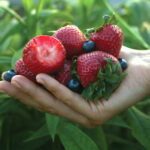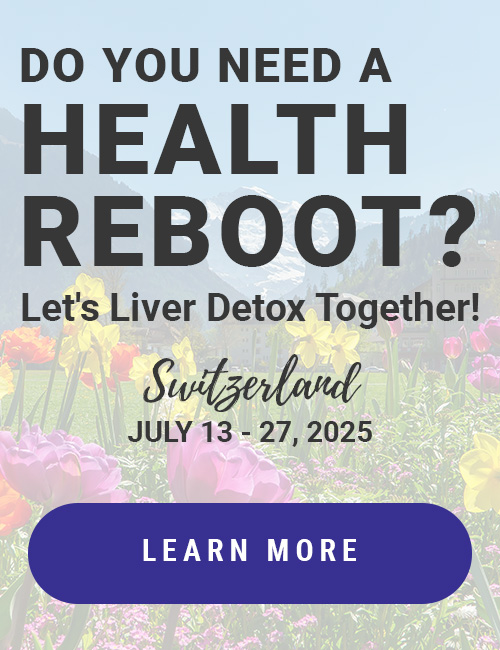Myth: Food Labels Will Tell Me Everything I Need To Know.
What You Should Know About Food Labeling
You don’t know all about food labels just from reading them. These are things you should know about labeling that the average consumer doesn’t:
- No regulations exist for the term “natural,” so you could technically buy something labeled “natural” made entirely from refined sugar, salt, and lard!
- “Low fat” labels require that the fat must be reduced 25%, but that doesn’t stop the manufacturer from adding taste with more sugar, flour, or other calorie-dense ingredients for a calorie count just as high—or even higher.
- A label of “whole wheat” doesn’t mean that only whole grains are in the product. It means that some whole grains are in it. You could have 90% white flour, and 10% whole wheat flour, and call it “whole wheat!” Buy only products that say “100% whole grain.” This is one way that manufacturers can make products that taste good but aren’t good for you, but allow consumers to think otherwise.
- If a food is labelled “healthy,” that just means it doesn’t exceed USRDA limits on sodium, fat, and saturated fat. It could still be full of sugar. Since the “healthy” regulations were passed in 1989, we’ve learned that saturated fats are not created equal. Coconut and palm oils, for instance, are nutritious medium-chain fatty acids and did not cause the health problems attributed to them.They are technically a “saturated fat,” but they are very good for you.
- The “whole grain” label requires only that 51% of the grain be the whole grain. That means 49% of it can (and usually is) bleached, refined white flour. Purchase only food labelled “100% whole grain” instead.
- Manufacturers play a game with serving sizes, showing acceptable nutrition and calories by making a serving size much smaller than anyone actually eats.
Additionally, many people know that monosodium glutamate (MSG) is a pervasive food additive from a dangerous class of chemicals called excitotoxins in processed, canned, and restaurant food.
MSG-added foods include fast food from Taco Bell, Wendy’s, McDonalds, KFC, and more, as well as Campbell’s soups, virtually all “cream of X” soup, most salad dressings, ramen noodles, and thousands of other foods. MSG is found especially in (but not limited to) low-fat or diet products. It is highly addictive and makes food taste better, thus making the consumer want more MSG-added foods. You can imagine why food manufacturers are motivated to put more of it in their product than the competitor does!
Most people DON’T know that MSG has been linked to brain damage, tumors, and lesions, nervous system and endocrine problems. You can see many studies (144 at last count) at pubmed.com on how rats have been injected with MSG to make them obese for studying diabetes. John Erb’s review of the history of MSG in his book The Slow Poisoning of America links it to migraines and headaches, autism, and ADHD, among other health problems currently skyrocketing.
Some evidence links MSG and other “excitotoxins” like apartate (the chemical sweetener aspartame) to neurodegenerative brain diseases like Parkinson’s, Huntington’s, ALS, and Alzheimer’s. Excitotoxin food additives are especially risky for people with diabetes or who have had strokes, brain injuries, seizures, or hypertension. Some food labelled as having “no MSG” in fact contains other equally dangerous excitotoxins.
But those are just the foods that put MSG on its ingredient list. Consider that these additives always contain MSG as you consider whether you really know all about food labels:
- Hydrolyzed Vegetable Protein
- Hydrolyzed Protein
- Hydrolyzed Plant Protein
- Plant Protein Extract
- Sodium Caseinate
- Calcium Caseinate
- Yeast Extract
- Textured Protein (Including TVP)
- Autolyzed Yeast
- Hydrolyzed Oat Flour
- Corn Oil
These additives frequently contain MSG:
- Malt Extract
- Malt Flavoring
- Bouillon
- Broth
- Stock
- Flavoring
- Natural Flavors/Flavoring
- Natural Beef Or Chicken Flavoring
- Seasoning
- Spices
Finally, these additives may contain MSG or other excitotoxins:
- Carrageenan
- Enzymes
- Soy Protein Concentrate
- Soy Protein Isolate
- Whey Protein Concentrate
Fact: There is an ever-increasing presence of excitotoxins in the food supply, the government is turning a blind eye to it, and deceptive labeling practices are more reasons to eat natural, organic plant foods. Food labeling has become a cat-and-mouse game between manufacturers and the government, so you don’t really know all about food labels. Trust your instinct that a long list of chemical ingredients you cannot pronounce is not something you want to purchase, consume, or allow anywhere near children you care about.













